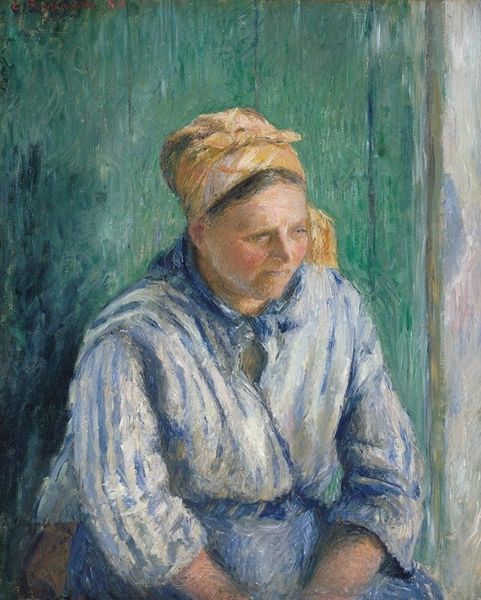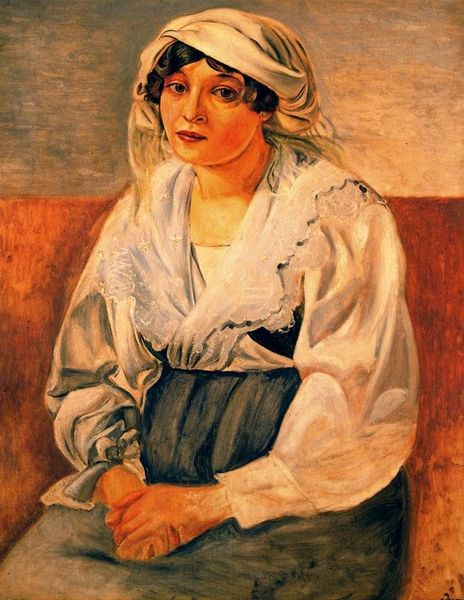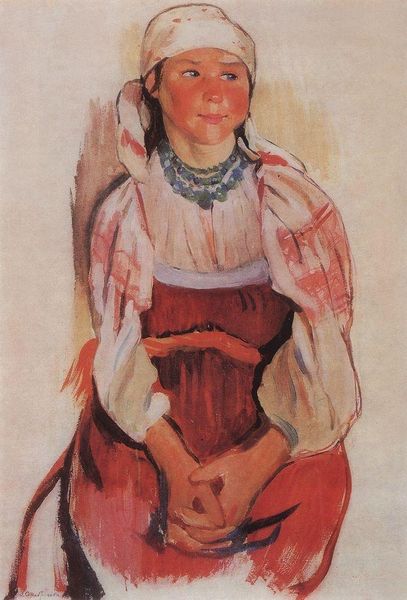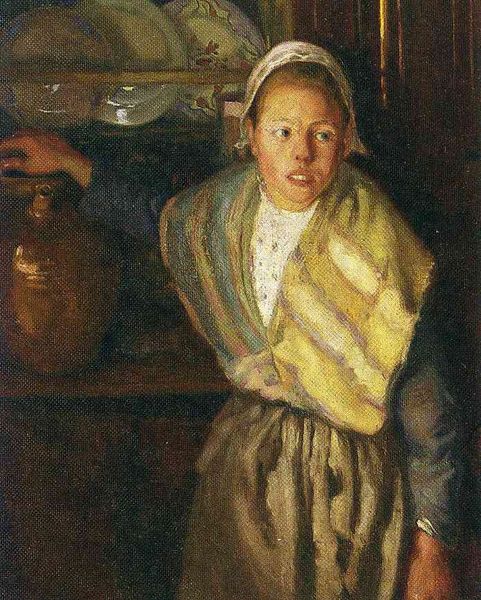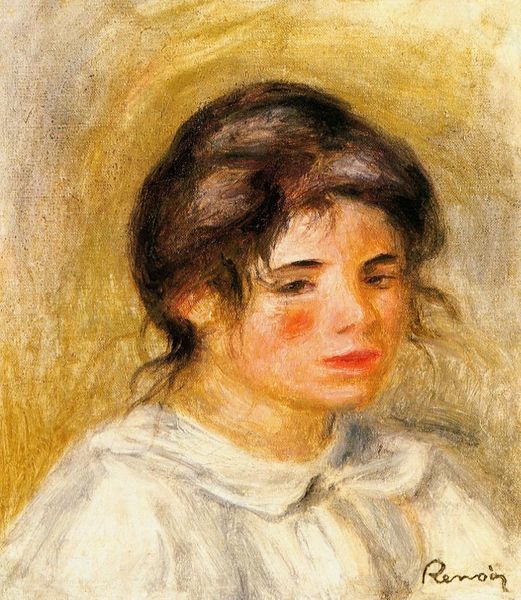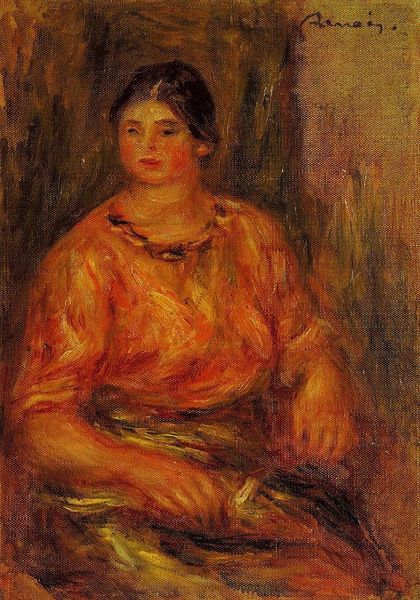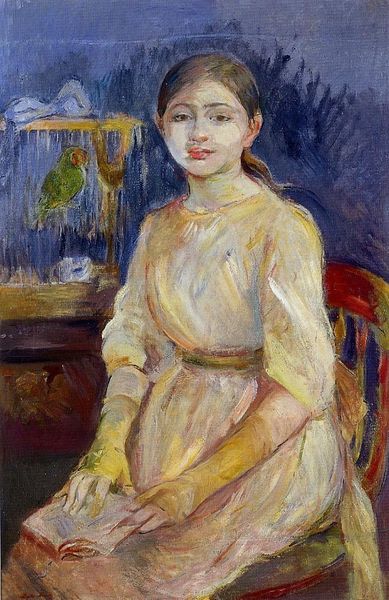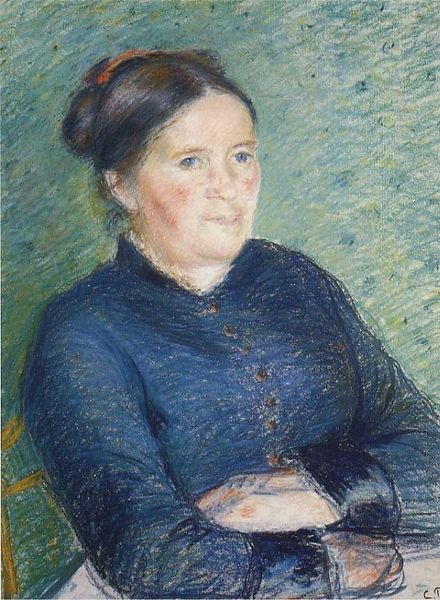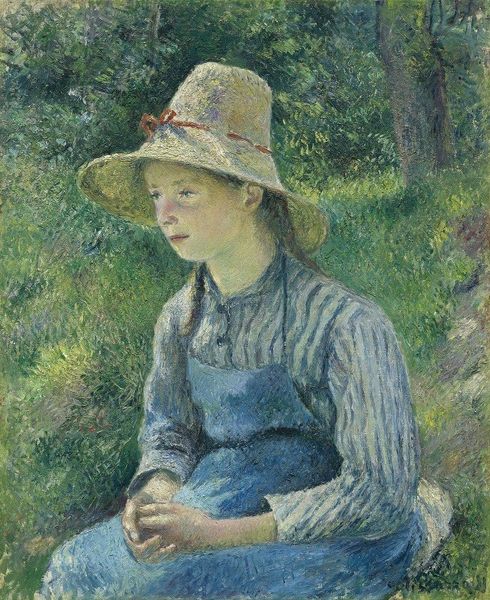
Copyright: Public domain US
Curator: Welcome. Here we see Zinaida Serebriakova’s oil painting, "Portrait of a Nurse," completed in 1909. Editor: My immediate impression is one of quiet strength. Her posture, arms crossed, conveys a grounded, watchful presence despite the soft hues. The visible brushwork lends her a vitality, almost as if caught mid-movement. Curator: The nurse embodies more than just physical strength, doesn’t she? Consider the symbolic weight of the medical profession. It’s not merely about the uniform or the role; it’s a connection to themes of care, resilience, and communal wellbeing – values perhaps intensified in pre-revolutionary Russia. Editor: Indeed, the whiteness of her attire can be read through the lens of semiotics: traditionally, it indicates purity, cleanliness, associated here with the nurse's healing capacity and commitment to her patients. The color is so prominent and strategically placed. The loose draping folds create rhythmic textures—visual interest, no doubt. Curator: The subtle touch of color in her cheek— the gentle redness— is a classic symbol of good health, yet here, given the profession, perhaps hints at vulnerability. Are those hints of concern on her brow? Or resilience? Either reading pulls at historical concerns about access to or the status of healthcare… Editor: Note how Serebriakova has created depth and tension through subtle shifts in the palette, without sharp edges or drastic contrasts. Look carefully; the play of light gives her a subtle animation, suggesting perhaps emotional complexity—qualities often suppressed within rigid social structures. Curator: Certainly, there is a tension between her composed facade and those undercurrents of sensitivity. Does this piece also implicitly speak to the status of women at this period in Russian history? Editor: One might argue her stance could challenge passive norms within social hierarchies of that time; instead, presenting a strong presence by the overall arrangement of forms to evoke those characteristics. Curator: Indeed. And perhaps by visually embodying her cultural context as it also transcended, as if Serebriakova was offering a perspective towards change. Editor: A thoughtful combination of visual art to express ideas through her portrait; I think it definitely prompts us to consider more. Curator: It seems the artwork can be considered in new ways to understand society, culture, history through the symbolic world the artist used, perhaps allowing it to resonate anew.
Comments
No comments
Be the first to comment and join the conversation on the ultimate creative platform.
